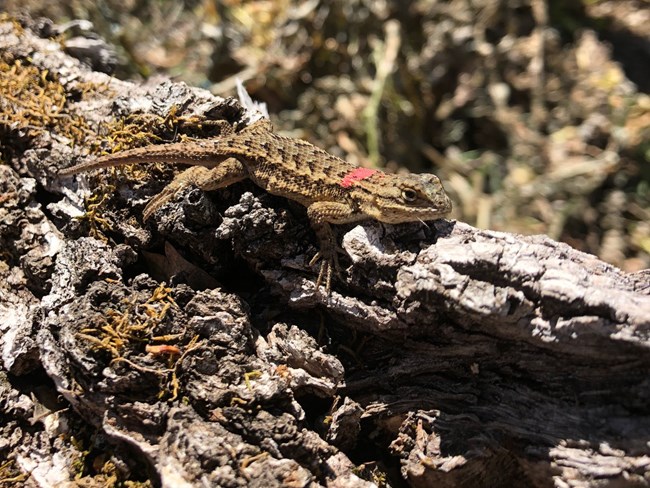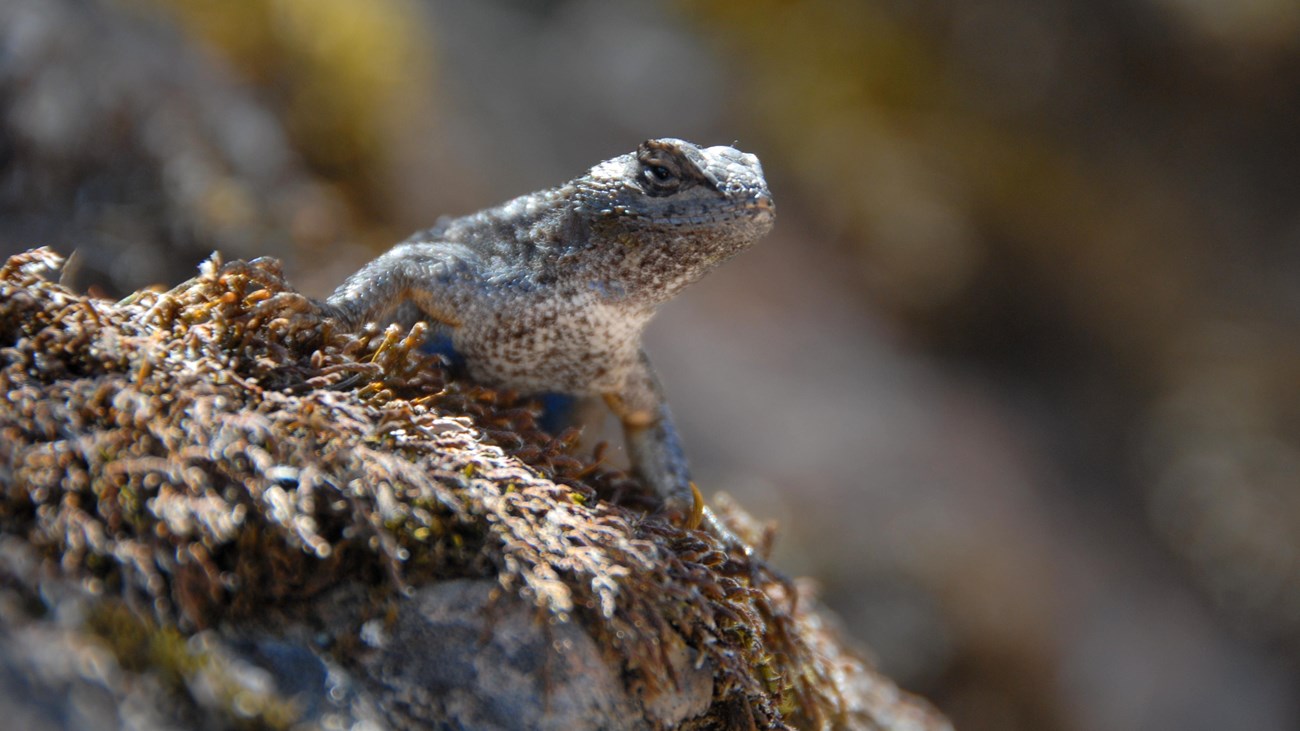
NPS Reptiles such as snakes and lizards are cold blooded: they do not produce their own body heat! During the summer seasons they will seek shade in the grass and trees, but during the winter these reptiles could be found sun- bathing in your path! You may find some of these common and rare species at the park: California king snake (Lampropeltis getula californiae): California kingsnakes are typically around three feet long, and have alternating brown/black and white/cream bands. This snake is not venomous and generally not aggressive, but when they are disturbed, they will shake their tails quickly and hiss as a warning. Legend has it that king snakes earned their name because of their ability to eat other snakes--even rattlesnakes. Alameda whipsnake (Masticophis lateralis euryxanthus): The Alameda whipsnake is a threatened reptile species that has been losing much of its habitat due to human influences urbanization. They are only found in the San Francisco Bay Area, mostly in Contra Costa and Alameda counties, and loss of habitat has reduced the population to five distinct areas within those counties. They are slender snakes that grow to be around 4 feet long with black/brown backs and a distinct yellow stripe down each side of their bodies. Whipsnakes are very fast and good climbers, commonly escaping into trees when threatened. Park staff have studied the snake’s population on Mt. Wanda and are currently working to conserve its habitat. California slender salamander (Batrachoseps attenuatus): Probably the most common salamander in the area, the California slender salamander can be found in moist areas underground or beneath objects, and are active on the surface during the rainy season. They are dark brown with a red, brown, yellow, or tan stripe on the back. From tip to tail, this salamander is around five inches long and has tiny legs that are not easily seen, making it look very much like a worm. 
Reptiles & Amphibians in Bay Area Parks
Check out the Pacific Coast Science & Learning Center site for more information on unique local reptile and amphibian species. |
Last updated: October 12, 2022
